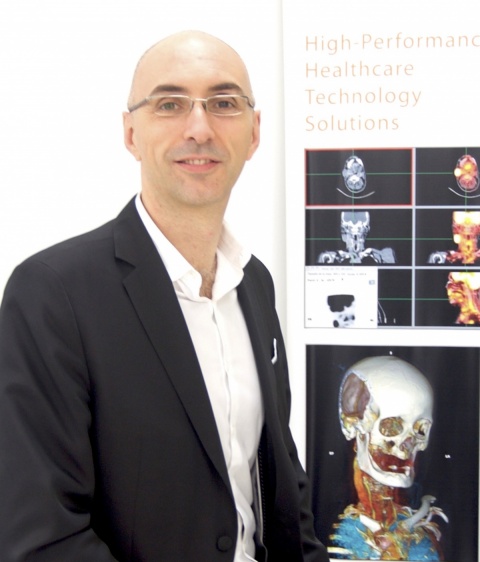Article • Metadata
England adopts Translational Medical Information Server (TMIS)
England’s NHS has received an advanced medical imaging and genomic data integration platform from a global healthcare information systems specialist.
Report: Mark Nicholls

A Translational Medical Information Server (TMIS) that aims to prevent adverse medication events, assist in pre-operative genomic screening and establish telemedicine networks is being adopted by NHS England’s Open Source and Code 4 Health Programmes.
Developed by Kanteron Systems (founded 2005), the TMIS platform integrates genomics, pharmacogenomics, digital pathology, radiology, biosensors, and analytics into a single unified workflow at the point of care.
The system can, for example, allow oncologists to access radiologists’ images and studies, pathologists’ biopsies and reports, lab genomics sequences, pharmacogenomics databases, and biosensors’ readings and combines all that information to enable analytics via single-sign on, single interface, and single point of access.
Shawn Larson, Senior Project Manager at the Health and Social Care Information Centre and creator of the OpenPACS project, explained the agreement with Kanteron brings the NHS a set of ‘quality, cutting edge and medical device certified diagnostics’ combining, he added, imaging genomics and pathology into a single system.
Accessed via NHS England’s Open Source/Code 4 Health repository and managed on an on-going basis by a clinically led NHS custodian group, this will take NHS informatics capability to a new level, with Open Source now a ‘genuinely viable and affordable alternative to proprietary solutions.’
The company reports that the National Health Service will make financial savings by improving patient outcomes via improvements in the diagnosis of conditions including cardiovascular disease, cancer, obesity and diabetes; support personalised therapies; and deliver more focused medication.
Founder and CEO of Kanteron Systems, Jorge Cortell, said that, as a complete personalised medicine solution, TMIS integrates ‘silos’ currently existing in many hospitals such as genomics, pharmacogenomics, digital pathology, radiology, biosensors, and analytics into a single unified workflow to produce a complete visualisation with deep integration, enabling researchers and clinicians to reach precise diagnostics with ease and speed. ‘While any of those components provide all the functionality needed by each area, when we connect them, tremendous synergies and efficiencies are enabled, such as Virtual Multidisciplinary Collaboration, Adverse Medication Event Detection, Radiomics Analysis,’ he added.

NHS institutions gain unlimited access to Kanteron’s TMIS platform source code and free use. For Kanteron this entails close NHS collaboration to co-develop specific tools and functions needed by the clinicians.
The system works via a web browser and runs either on-prem or in the cloud to provide data (including imaging and metadata) storage, management, integration, collaboration, normalisation, as well as visualisation.
Currently with customers in 15 countries, Kanteron reports that the key benefits for the NHS in terms of workflow, cost and clinical outcome will be increased interoperability, enhanced collaboration, faster diagnoses, improved diagnostic tools, flexibility, better control of the data, avoidance of vendor lock-in, and considerable savings.
Cortell: ‘Our experience in other countries is that patients benefit from faster diagnosis, access to their own data (if hospital administrators allow it), reduced errors from identification to double data entry or adverse medication event, and overall improved outcomes.’
Other areas it will be particularly beneficial are those involving complex cases and a multitude of tests, exams, images and reports in oncology, cardiology, neurology and so on, will particularly benefit most from the integrated platform.
Work with NHS pilots currently using the in-built development platforms to enhance and innovate the system is continuing, as well as progression in existing relationships with higher education institutions, schools of radiology and universities to create a unified diagnostics solution, and to continue to promote the growth and adoption of open source in the NHS.
Profiles:
Shawn Larson is a Senior Project Manager at the Health and Social Care Information Centre and creator of the OpenPACS project. Following 18 years in frontline diagnostic imaging, he spent time in industry and private healthcare before joining government healthcare IT where he has been involved in a variety of national projects.
Founder and CEO of Kanteron Systems, Jorge Cortell lived in New York, but moved to London with his family to personally support and manage the collaboration with the NHS. Kanteron Systems has offices in New York, London, Lima, as well as a European HQ in Valencia.
09.08.2016


